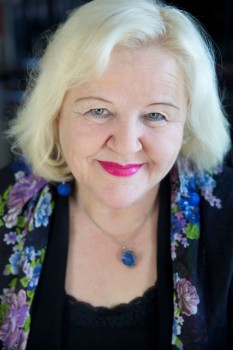Reviews
Monikulttuurisen maamme kirja. Suomen kielen ja kulttuurin lukukirja [The book of our multicultural land. A reader of Finnish language and culture]
23 October 2014 | Mini reviews, Reviews
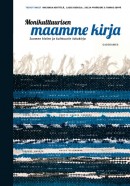 Monikulttuurisen maamme kirja. Suomen kielen ja kulttuurin lukukirja
Monikulttuurisen maamme kirja. Suomen kielen ja kulttuurin lukukirja
[The book of our multicultural land. A reader of Finnish language and culture]
Toim. [Ed. By] Marjukka Kenttälä, Lasse Koskela, Saija Pyhäniemi, Tuomas Seppä
Helsinki: Gaudeamus, 2013. 252 pp.
ISBN 978-952-495-253-8
€ 34, hardback
This book opens a fascinating, often entertaining and eminently readable perspective on Finnishness and Finnish culture. It contains short Finnish texts supplied with introductions, from the Kalevala and the writings of Finland’s national author Aleksis Kivi to the present day. There are also Finnish translations of the work of Finnish-Swedish authors. The older texts are drawn from the literary ‘canon’, in works by J.L. Runeberg, Z. Topelius, Juhani Aho, Maria Jotuni, Eino Leino, F.E. Sillanpää, Väinö Linna and Tove Jansson. Among the excerpts that date from more recent times there are even pop and rock lyrics. The writing often throws light on some aspect of Finnishness, sometimes with a critical or ironic note. There is also writing by immigrants. Interspersed with the literary examples are short essays giving the views of experts on subjects like Finnish history, language or sport. Some of the texts conclude with a glossary of unfamiliar words and terms. The explanations are arranged in order of their appearance in the text: for the casual reader seeking the meaning of a word, alphabetical order would have been more practical, though even then some phrases might have remained unnoticed.
Translated by David McDuff
The painter who wrote
6 October 2014 | Non-fiction, Reviews
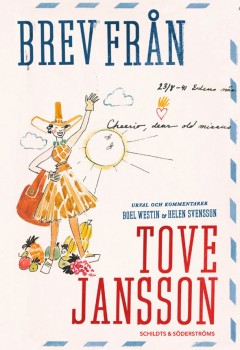 Brev från Tove Jansson
Brev från Tove Jansson
Urval och kommentarer Boel Westin & Helen Svensson
[Letters from Tove Jansson, selected and commented by Boel Westin & Helen Svensson]
Helsingfors: Schildts & Söderströms, 2014. 491 pp., ill.
ISBN 978-951-52-3408-7
€34.90
In Finnish (translated by Jaana Nikula):
Kirjeitä Tove Janssonilta
ISBN 978-951-52-3409-4
Nothing could be more mistaken than to describe Tove Jansson as ‘Moominmamma’. In her statements she was both cutting and complex – conflict-ridden and full of paradoxes. And she was nobody’s mamma.
Tove Jansson (1914–2001) became world famous (especially ‘big’ in Japan) with her Moomins – the characters of her illustrated books for children (1945–1970) – and her books for adults are a part of her work that is at least as interesting. Her training, ambition and artistic passion were, however, focused on painting.
Anyone who has read Boel Westin’s excellent biography – now available in English, Tove Jansson: Life, Art, Words – ‘knows’ all this, but to experience it through Jansson’s own letters, in an alternating process of reflection and recreation, brings the problems close to the reader in quite a different way: one that is shocking, but also deeply human. More…
Ove Enqvist & Heikki Tiilikainen: Linnakesaaret. Rannikkolinnakkeiden elämää sodassa ja rauhassa [The fortress islands. The life of the coastal bastions in war and peace]
2 October 2014 | Mini reviews, Reviews
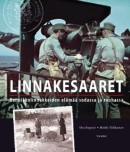 Linnakesaaret. Rannikkolinnakkeiden elämää sodassa ja rauhassa
Linnakesaaret. Rannikkolinnakkeiden elämää sodassa ja rauhassa
[Fortress islands. The life of coastal bastions in war and peace]
Helsinki: Tammi, 2014. 301 pp., ill.
ISBN 978-951-31-8005-8
€53.90, hardback
Finland’s coastal artillery was created after independence in 1918 to protect the country’s long coastline. Part of the system was, however, built in the early 20th century during the period of Russian rule for artillery batteries that were formed to provide security for St Petersburg. This carefully constructed and handsomely illustrated ‘coffee table book’, by two former bastion officers and non-fiction authors, charts the history of the coastal artillery until the decommissioning of the service: in 1998 its functions were transferred to other branches of the military. The main emphasis is on the early history, and nearly half of the book is devoted to a portrayal of the Second World War period. During the Winter and Continuation Wars the coastal artillery played a major role in Finland’s defence. Fierce artillery battles took place on the fortress islands, and there was also hand-to-hand fighting on them. The book presents a comprehensive account the development and operation of the bastions and the artillery in both wartime and peacetime. Light is shed on the diverse aspects of the working lives and recreations of soldiers and civilians in the harsh and demanding conditions of the outer islands.
Translated by David McDuff
Luvattu maa. Suur-Suomen unelma ja unohdus [The promised land. The dream of Greater Finland, and how it was forgotten]
26 September 2014 | Mini reviews, Reviews
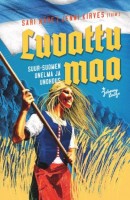 Luvattu maa. Suur-Suomen unelma ja unohdus
Luvattu maa. Suur-Suomen unelma ja unohdus
[The promised land. The dream of Greater Finland, and how it was forgotten]
Toim. [Ed. by] Sari Näre & Jenni Kirves
Helsinki: Johnny Kniga, 2014. 407 p.
ISBN 978-951-0-40295-5
€36.90, hardback
In the 1920s and 1930s Finland was powerfully influenced by the idea of a Greater Finland which was also to include the Finno-Ugric peoples living on the Soviet side of the border – at least East Karelia, if not more. Right-wing nationalists in particular nourished a vision that had its roots in the idealistic ‘Karelianism’ of the nineteenth century. When during the Second World War in 1941 Finland ended up fighting the Soviet Union as an ally of Nazi Germany, and the Finnish army advanced far beyond the eastern border, for a short time many Finns even viewed a Greater Finland as a possibility. After Finland suffered defeat in the war there was a desire to forget both the embarrassing alliance with Nazi Germany and the frenzied nationalistic dreams of Greater Finland with their population resettlements and other plans. Not until the 1970s did anyone begin to study the subject in more depth. Five historians from a younger generation present a fascinating study of the Greater Finland idea and the attempts at its realisation, discussing, for example, the attitude to the war taken by women and the clergy, life at the front line, and propaganda, including its expression in literature.
Translated by David McDuff
Minna Ruckenstein: Lapsuus ja talous [Childhood and the economy]
28 August 2014 | Mini reviews, Reviews
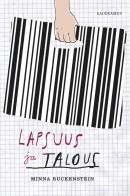 Lapsuus ja talous
Lapsuus ja talous
[Childhood and the economy]
Helsinki: Gaudeamus, 2013. 186 pp.
ISBN 978-952-495-294-1
€33, paperback
In her book the cultural anthropologist and researcher Minna Ruckenstein examines the Finnish and Western economy from an unusual angle, looking at it from the point of view ofchildren mainly under the age of 12. The preconceptions of educators about a deep divide between children and the market economy do not necessarily correspond to reality; the economic activities of children are diverse. They include, for example, reciprocity and exchange as a value creator that supports social relations. Children have a different relationship to money and its valorisation from that of adults. The difference between work and play is blurred, and children’s forms of paid work and their experience of it are also not as unambiguous as has been traditionally thought. During recent decades commercial children’s culture has become an increasingly obvious part of the child’s life; information technology has created new forms of participation, and children are not only targets of active marketing but also producers. This interesting book shows that childhood and the economy have closer and more nuanced links than is generally assumed.
Translated by David McDuff
Kirja muuttuvassa tietoympäristössä [The book in a changing information environment]
21 August 2014 | Mini reviews, Reviews
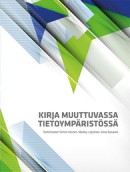 Toim. [Ed. by] Markku Löytönen, Tommi Inkinen, Anne Rutanen
Toim. [Ed. by] Markku Löytönen, Tommi Inkinen, Anne Rutanen
Helsinki: Suomen tietokirjailijat ry. [The Finnish Association of Non-Fiction Writers], 195 p., ill.
ISBN 978-952-67356-3-4
paperback; available also online:
http://www.suomentietokirjailijat.fi/jasenyys/julkaisut/kirja-muuttuvassa-tietoymparisto/
In the Western world the experience of reading is undergoing a critical change. There is even talk of a third information revolution. Books are increasingly acquiring electronic form, and the future of the printed book is being called into question. Kirja muuttuvassa tietoympäristössä contains the considered opinions of 18 experts on what is taking place in the field of non-fiction, and gives an overview of the literature on the current situation, which is seen from the point of view of the bookstore, the library, the author and the publisher. There is a discussion of intellectual property issues, developments in technology, and changes in the use of teaching materials, language, and reading habits. Finland is a leading country in both literacy and reading. The number of books has slowly declined in recent years, but it seems that the country’s youth has maintained an interest in books, and in fiction in particular. Although printed reference works of the encyclopedia type have given way to the information provided by the Internet, it is likely that literature and reading will preserve their status as a part of human culture.
Translated by David McDuff
Juho Kotakallio: Hänen majesteettinsa agentit. Brittitiedustelu Suomessa 1918–1941 [His Majesty’s agents. British Intelligence in Finland 1918–1941]
14 August 2014 | Mini reviews, Reviews
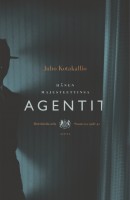 Hänen majesteettinsa agentit. Brittitiedustelu Suomessa 1918–1941
Hänen majesteettinsa agentit. Brittitiedustelu Suomessa 1918–1941
[His Majesty’s agents. British Intelligence in Finland 1918–1941]
Jyväskylä: Atena, 2014. 297 pp., ill.
ISBN 978-952-300-025-4
€34, hardback
Historian Juho Kotakallio’s book deals with the work of the British Intelligence Service (SIS) in Finland from the Declaration of Independence (1917) to the early phase of the Continuation War (1941–1944). The Bolshevik Soviet state was also seen as a threat to Europe in its western neighbour Finland, which offered a key observation post for the gathering of secret intelligence about the Soviet Union. Undercover British agents took up residence in the country, and were moved to and fro across the eastern border. Russian émigrés and some Finns also worked for the British. One victim of the spy world was Sidney Reilly (considered to be a prototype of James Bond), who was lured through Finland to the Soviet Union, where he met his death by execution. In the 1930s the agents’ interest also increasingly focused on economics and on the growing power of Germany. During Finland’s Winter War with the Soviet Union in 1939–40 British intelligence was based more on openness and trust. After the outbreak of the so-called Continuation War, in December 1941, Britain declared war on Finland, and the possibilities for intelligence gathering there became fewer. The book, which gives a fascinating and objective view of the intelligence world, unfortunately lacks an index of names.
Translated by David McDuff
Harri Kalha: Muodon vuoksi. Lasin ja keramiikan klassikot [For form’s sake. The classics of glass and ceramics]
24 June 2014 | Mini reviews, Reviews
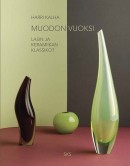 Muodon vuoksi. Lasin ja keramiikan klassikot
Muodon vuoksi. Lasin ja keramiikan klassikot
[For form’s sake. The classics of glass and ceramics]
Helsinki: The Finnish Literature Society, 2013. 335 pp., ill.
ISBN 978-952-222-402-6
€75, hardback
This handsome, massive work introduces objects of glass and ceramics from the Finnish ‘golden age’ of the 1940s, 1950s and 1960s. Artist-designers Kaj Franck, Tapio Wirkkala, Toini Muona, Timo Sarpaneva and Kyllikki Salmenhaara were awarded three prizes at the Milan Triennale, Rut Bryk and Birger Kaipiainen two, but the number of designers whose works have become classics without these prizes is naturally much larger. The art historian and author Harri Kalha records the exceptional development of industrial design. In postwar Finland, with scarce resources, art and mass production entwined, resulting in high-standard objects of glass and ceramics gaining international fame and becoming part of international modernism. The businessman Kyösti Kakkonen became interested in Finnish design in the 1990s, and now his private collection consists of thousands of objects, from which Kalha has made his choices for the book. More than two hundred photographs, by Niclas Warius, pay tribute to the materials, shapes and colours of the objects as light is reflected from the surfaces, making them appear three-dimensional, both real and dream-like. The printing, by Bookwell, matches the quality of the photography.
The private I? Me and my home
17 June 2014 | Reviews
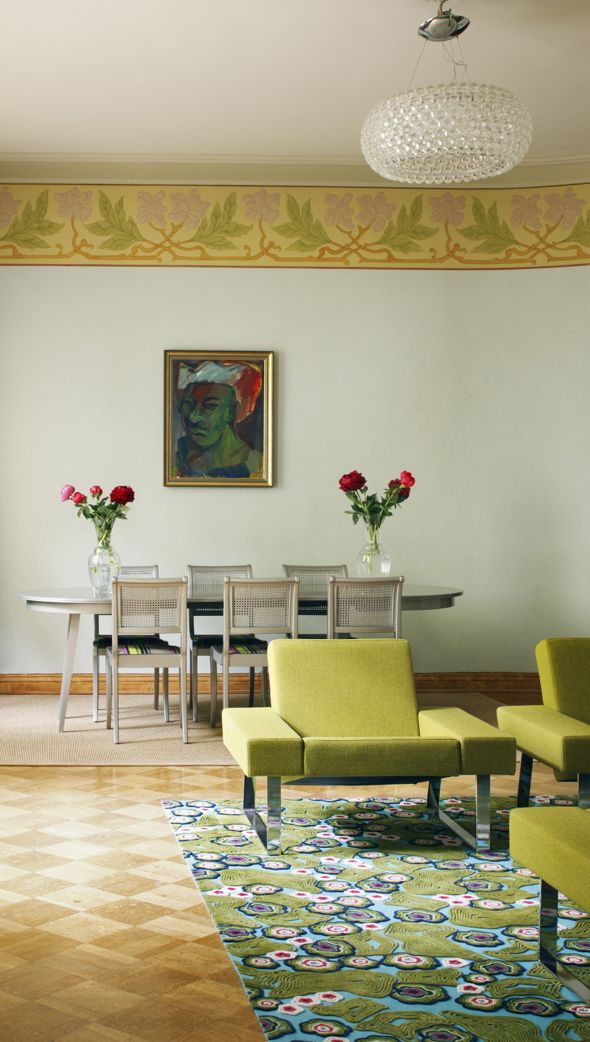
Art Nouveau with a modern twist. Photo: Avaimia ajattomiin suomalaisiin sisustuksiin / Jaanis Kerkis
Avaimia ajattomiin suomalaisiin sisustuksiin
[Keys to timeless Finnish interiors]
Design: Hanni Koroma, text: Sami Sykkö, photographs: Jaanis Kerkis
Helsinki: Gummerus, 2014. 123 pp., ill.
ISBN 978-951-20-9507-0
€32.90, hardback
Katja Lindroos
MOMO. Koti elementissään
[MOMO. The home in its element]
Photography: Riikka Kantinkoski, Niclas Warius
Helsinki: Siltala, 2013. 154 pp., ill.
ISBN 978-952-234-164-8
€32.90, hardback
www.momokoti.fi (in Finnish only)
‘Interior decoration’ has become an extremely popular pastime in Finland – as elsewhere where the standard of living allows it.
Innumerable magazines and blogs keep churning out photos of rooms with large white, cushioned sofas, glossy white kitchen cabinets and white floors on which furniture seems to float forlornly. Walls are decorated with wooden or metallic letters forming words: love; home, sweet home. In the kitchen the bread bin bears the word BREAD. (Bookcases, with actual books, are rare.)
Why is it that in our age which worships ‘individuality’, trends rule? More…
Sata sosiaalista innovaatiota Suomesta [100 innovations from Finland]
5 June 2014 | Mini reviews, Reviews
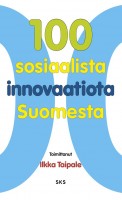 Sata sosiaalista innovaatiota Suomesta
Sata sosiaalista innovaatiota Suomesta
[100 innovations from Finland]
Toim. [Ed. by] Ilkka Taipale
Helsinki: Finnish Literature Society, 2013. [Second, revised edition] 332 pp .
ISBN 978-952-222-466-8
€10, paperback
English edition:
100 Social Innovations from Finland
ISBN 978-952-222-463-7
€10, paperback
In this book edited by the physician and social activist Ilkka Taipale, dozens of experts discuss Finnish social innovations. The book is a revised version of the volume that first appeared in 2006 and has already been translated into 17 languages. Readers may have their own ideas about whether all the innovations originated in Finland – nevertheless, they are distinctively Finnish in their application. They are dealt with in the following groups: administration, social policy, health, culture, international context, civil society, social technology and everyday amusements. A wide range of topics is covered, including the Sámi issue, the unicameral parliament, the maternity package, free education, text messaging and Nordic Walking [walking with the poles for exercise]. Some of the innovations, like the sauna, Nordic Walking, the board game ‘Star of Africa’ and the free computer operating system Linux, are well known outside Finland, while others are only to be found there. The viewpoints presented in the essays vary, but the book provides a thought-provoking overview of Finnish creativity.
Translated by David McDuff
Liisa Suvikumpu: Suomalaiset kylpylät. Kotimaisen kylpyläkulttuurin historiaa [Finnish spas. The history of Finnish spa culture]
28 May 2014 | Mini reviews, Reviews
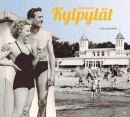 Suomalaiset kylpylät. Kotimaisen kylpyläkulttuurin historiaa
Suomalaiset kylpylät. Kotimaisen kylpyläkulttuurin historiaa
[Finnish spas. The history of Finnish spa culture]
Helsinki: Finnish Literature Society, 2013. 240 pp., ill.
ISBN 978-952-222-239-8
€45, hardback
The Finnish sauna fulfils some of the same functions as the spa, but the latter is more public. In Finland there have been various kinds of spas that employ the health-giving effects of water, and they have mostly been based on European models. The historian Liisa Suvikumpu presents the story of some twenty Finnish spas from a cultural-historical perspective. Their heyday lasted from the nineteenth century to World War II. At these establishments it was possible to enjoy the benefits of bathing and mineral water: they were accompanied by relaxation therapy, rest, exercise and a healthy diet , but also entertainment and socialising. The spas in various parts of Finland were keenly patronised by Russian visitors before the Russian Revolution of 1917. Some of Finland’s most renowned architects designed the buildings, and the premises often included pavilions, kiosks, a restaurant and a park. With its lively text and versatile illustrations this book would make also an excellent present.
Translated by David McDuff
Tellervo Krogerus: Sanottu. Tehty. Matti Kuusen elämä 1914–1998. [Said. Done. The life of Matti Kuusi, 1914–1998]
22 May 2014 | Mini reviews, Reviews
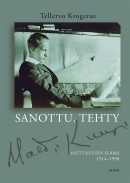 Sanottu. Tehty. Matti Kuusen elämä 1914–1998
Sanottu. Tehty. Matti Kuusen elämä 1914–1998
[Said. Done. The life of Matti Kuusi, 1914–1998]
Helsinki: Siltala , 2014. 856 pp., ill .
ISBN 978-952-234-194-5
€31.50, hardback
The folklorist Matti Kuusi vied for the status of the world’s leading researcher of proverbs with the Californian scholar Archer Taylor, his work extending from the shores of the Baltic Sea to Namibia’s Ovamboland. Proverbs revealed to him the deep structures of the human mind and showed that the nations of the world possessed a basis for mutual understanding. As a young man Kuusi read Spengler and predicted the destruction of the Western world. According to his ‘Kalevalan imperialism’, the Nordic region was to be the new world power. The war brought him to his senses: he understood that patriotism was mainly a matter of bland resilience. Professor Kuusi was a rigorous scholar, but also a provocative man of ideas who showed that pop music was today’s folk poetry. That idea received a mixed reception, but nowadays his department studies both rap music and ancient folk song. This biography by Tellervo Krogerus creates a rich portrait of a complex personality.
Translated by David McDuff
Kynällä kyntäjät. Kansan kirjallistuminen 1800-luvun Suomessa [Ploughers with a pen. The development of literacy in nineteenth-century Finland]
15 May 2014 | Mini reviews, Reviews
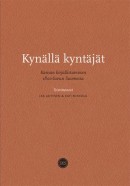 Kynällä kyntäjät. Kansan kirjallistuminen 1800-luvun Suomessa
Kynällä kyntäjät. Kansan kirjallistuminen 1800-luvun Suomessa
[Ploughers with a pen. The development of literacy in nineteenth-century Finland]
Toimittajat [Editors]: Lea Laitinen & Kati Mikkola
Helsinki: Finnish Literature Society, 2013. 558 pp., ill.
ISBN 978-952-222-453-8
€42, paperback
This multidisciplinary work by thirteen researchers discusses the writings of self-taught people in the 19th century. In their own communities these Finnish-language amateur authors were exceptions to the norm, but viewed in the context of the Finnish nation as a whole there were more of them than there were authors belonging to the educated classes. The principal aim is to examine how the common people saw the social and cultural phenomena which the educated classes saw from their own perspective. Kynällä kyntäjät provides a background to the research of the subject and the spread of writing ability, presenting diaries, biographies, letters, rural poetry published in newspapers, broadside ballads, plays, short stories, collections of folklore and handwritten journals, as well as focusing on the mental and linguistic changes related to the development of literacy. The book opens up a new and fascinating perspective on the 19th-century world of ideas.
Translated by David McDuff
Updated, alive
8 May 2014 | Non-fiction, Reviews
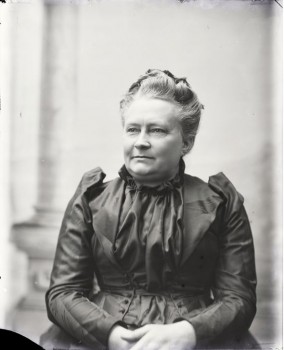
Minna at 50. The Finnish flag is flown on her birthday: 19 March has been named the Day of Equality. Canth also flies on the tail of one of the aircrafts of the Nordic airline Norwegian: the fleet carries portraits of ‘heroes’ and ‘heroines’ of four Nordic countries (the other Finn is the 19th-century poet J.L. Runeberg). Original photo: Viktor Barsokevich / Kuopio Museum of Cultural History
Herkkä, hellä, hehkuvainen – Minna Canth
[Sensitive, gentle, radiant – Minna Canth]
Helsinki: Otava, 2014. 429 pp., ill.
ISBN 978-951-1-23656-6
€40.20, hardback
There are two sure methods of preserving the freshness of the works of a classical author in a reading culture that is increasingly losing its vigour.
The first is to give a high profile to new interpretations of them, either in the form of scholarly lectures or of artistic re-workings, such as dramatisations, librettos or film scripts. Another unbeatable way to keep them alive as a subject of discussion is an updated biography, through which the author is seen with new eyes.
Minna Canth (1844–1897) is now celebrating her 170th anniversary, and she is fortunate in both respects. Having begun her literary career in the late nineteenth century, she still continues to be Finland’s most significant female writer.
Her influence on the role of women in society and, in particular, her promotion of girls’ education, is the cornerstone of Finland’s social equality. In the twenty-first century Canth’s plays are still receiving new interpretations, and they have also been made into operas and musicals. (Read her short story, ‘The nursemaid’, here.) More…

